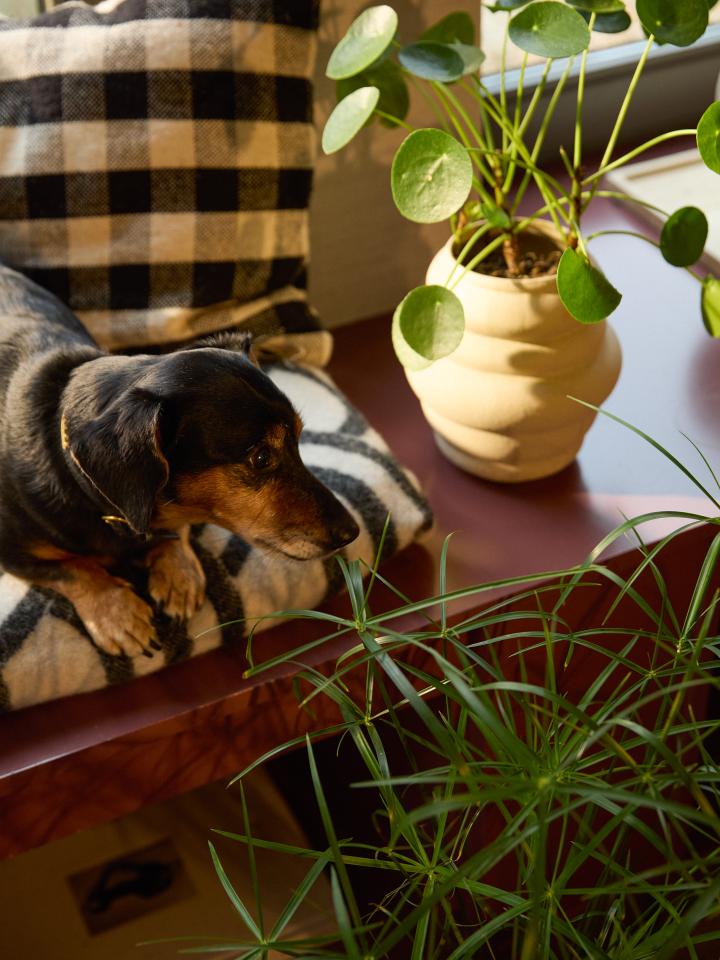Tip 1: Choose houseplants with similar care needs
Which plant goes in which room? And which plants work better together and complement each other? An important aspect of combining houseplants is matching their care requirements. It's useful to put plants with the same care requirements (light, air, water, etc) together, as this makes caring for your plants a lot easier and ensures that your houseplants can shine their brightest.
Some plants need more water and higher humidity (such as Ferns and Calathea), while others can do without water for a few weeks (such as Succulents, Cactus, Zamioculcas and Snake plant).
Houseplants such as Strelitzia, Ficus and Succulents like a lot of 1indirect sunlight, while plants such as Leaf begonia, Monstera, Dragon ivy and Zamioculcas, need less light. For more information on plant light requirements, check out this article.

Tip 2: Use plants of varying heights to create extra interest
One of the simplest yet most effective ways to combine and style your houseplants is to place them near or next to each other, but at different heights. This creates depth and interest. Use plant stands, shelves or stools as surfaces and don't forget to consider factors such as size, colour and light requirements:
- Alternate large and small plants, using larger plants to create shade for smaller, less light-reliant specimens.
- Place houseplants with different shades of green together, and combine flowering houseplants with non-flowering plants.
- Put plants that require a lot of light closer to a window than plants that need less light.

Tip 3: Think big - choose large houseplants
There's nothing like a plant that's on the larger size to bring a little delicious drama into your home. Try placing a large houseplant such as Strelitzia or Ficus on the floor next to a sunny window, or putting a big plant on a stool, table or other surface to change the lines and heights in your space in a noticeable way.
Handily, large plants can offer protection to smaller houseplants that need less sunlight, as they provide shade due to their height and large leaves.

Tip 4: Use hanging and climbing plants to utilise your entire space
Give your houseplants a new place to shine by taking them to new heights. There's a diverse variety of hanging and climbing plants, and often need less sunlight than large houseplants. Choose your favourite from these 10 beautiful and easy-to-care-for hanging plants.

Tip 5: Choose houseplants with the wow factor
Every houseplant is a wonder of nature, but some attract more attention than others. By combining less conspicuous plants with special ones, you create an interesting effect. Here, we've listed 10 spectacular houseplants.

Tip 6: Consider shapes and colours
By combining plants with different shapes and colours, you can create a living work of art in your home. Choose rounder, softer shapes and green shades for places where you like to unwind. In your office or study, on the other hand, use brain-stimulating and colourful plants such as these eye-catchers.

More green inspiration
With so many houseplants, choosing the right one can be hard! These 10 plants work for any wishlist. For pets and young children, you should be aware of plant suitability and toxicity. And see our basic rules and tips for taking care of your new green friends.






